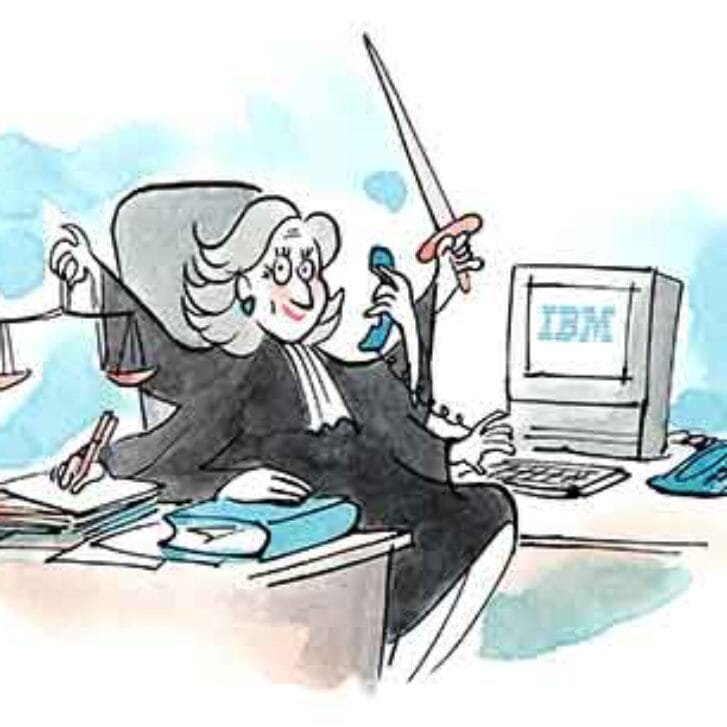To some, that amount of information might seem daunting, overwhelming and even unnecessary. But to some Wharton graduates, the more gigabytes, terabytes, petabytes and exabytes, the better. All students learn how to gather, mine, analyze and act on mountains of data as an integral part of the School curriculum, but some alumni have become specialists in the realm of analytics and big data. They have great timing.
“The speed and scale at which you receive data about how people are reacting to your product has dramatically increased,” says Christian Selchau-Hansen, WG’05, a former general manager at the online gaming service Zynga who recently joined Square to lead its product marketing. “Business leaders must be able to use the data in a way that helps develop a product or service and make it more meaningful.”
Analytics software, which aggregates and parses data and has become universally available to any business of late, is only as good as the data scientists using it.
“The measurement side is easy. What’s difficult is figuring out the fundamental problem you’re trying to solve for the customer and for the business,” Selchau-Hansen says.
Making things more complex is the variety of data coming into businesses: “structured and unstructured, streaming and historical, on-premise and born in the cloud,” explains Deepak Advani, WG’98, general manager for the cloud and smarter infrastructure at IBM.
Advani joined IBM in 1992 writing code, but after gaining his Wharton MBA, he assumed a more strategic role. He left IBM to pursue other opportunities, including chief marketing officer and head of e-commerce at personal technology firm Lenovo, but he returned to lead IBM’s SPSS statistics software team.
“That got me immersed into predictive analytics”—a discipline, Advani believes, that illuminates what will happen next in business.
Looking back, the most critical change that Assistant Professor Shawndra Hill has observed over the past few years is the types of data that businesses can access. “Firms have always had access to their own transactional data. Now they have outside information that can help them understand how customers and consumers feel about them,” she says, pointing to Google searches, Facebook posts and Twitter feeds. That data can be useful in spotting critical trends.
“In health care, [Google] queries about the flu have been found to predict flu outbreaks, and in finance, queries about housing purchases have been used to predict housing prices,” she says.
This wealth of data does not belong to just the biggest companies. Hill credits cloud computing—specifically, the large-scale server and storage infrastructure available over public and private networks—for changing the analytics landscape seemingly overnight. “Smaller firms now can compete with larger firms. The server power and disk space necessary to do computations for analytics are now accessible and inexpensive,” she says, pointing to Amazon’s Web Services as an example. Small, medium and large firms can apply a variety of analytical techniques with the data and technology at hand, ranging from predictive analytics to text analytics.
“The point of it all: to gain insights to make better decisions, such as how to improve customer retention, manage risk and reduce fraud,” Advani says.
For example, a California hospital created a database around 10,000 patients to track critical information such as age, family history, medications and procedures performed. Atop the database, the hospital built predictive models to improve decision-making for future patients. As a result, mortality rates for cardiac surgery decreased 50 percent, according to Advani.
Analytics: Not for Dummies
Hill cringes at the term “big data” and the technology industry’s attempt to make analytics seem easy.
“As someone who has always worked with large-scale data since 1995, I can tell you, the reality is analyzing big data is not easy. It takes time and experience, and it’s incredibly rare to find people with the skills to do it right,” she says.
She acknowledges that the analytics tools, including packaged and open-source solutions, have illuminated the power of data for the masses. But she warns data engines, data warehouses and the like are “only successful if you know what you’re doing.”
While it can be easy for a data scientist to hole up in a cube with their models, algorithms and data stores, the insights generated will only be useful if they work with their business’ functional experts, according to Hill and Selchau-Hansen.
“No matter how good you are at evaluation, you must have people who understand the business—domain experts—as part of your validation team,” Hill says.
Selchau-Hansen likens this to the learning teams of students with varied backgrounds and experiences that Wharton assembles. “Looking for a single person that has all the skills and expertise to get the most value out of data is like looking for a unicorn. Instead, you need a group of functional experts to prioritize the right questions, set up the right experiments and apply the results,” he says.
Marketing professors Peter Fader and Eric Bradlow also play down the hype of big data and instead focus on problem-solving. Fader and Bradlow established the Wharton Customer Analytics Initiative (WCAI) in 2008 to cement this laser focus on customers versus big data. They co-direct it to this day.
“We want our graduates to give careful thought to their customers and what they should track about them—that doesn’t always require a massive data warehouse,” notes Bradlow, vice dean and director of Wharton Doctoral Programs and the K.P. Chao Professor.
“Rather than throwing in all the data and hoping that something pops out, we believe in thinking about the setting and applying some domain knowledge. Not only will the model work better that way, but you’ll make better inferences about the underlying process and better decisions as a result,” says Fader, Wharton’s Frances and Pei-Yuan Chia Professor.
Both understand the need for sophisticated users of analytics.
“Gone are the days when data was something that people would fetch for business leaders. Instead, there is a blurred line between people that collect and manage data and those that build mathematical models,” Fader says.
“Five years ago, data mining was just a class people took. Now there are leadership positions at major companies that depend on analytics knowhow,” Hill adds.
Fader is convinced that even the path to the C-suite nowadays requires theory and technological knowledge, combined.
“It doesn’t matter if you’re in health care, finance, transportation or digital content. Every industry, because it has the ability to track behavior at the level of the individual customer, needs leaders that can properly analyze data,” he says.
Adding up to the Corner Office
Wharton alumni provide examples. Peter Kim, WG’05, serves as CEO of advertising software firm MightyHive. He spent seven years in online advertising in various roles spanning product management, marketing and sales. Most recently, he led business development for Google’s advertising technologies group. Now at MightyHive, every day Kim and his team follow the principles taught at Wharton, including taking the emotion out of marketing. MightyHive has helped a national consumer storage company, for instance, improve sales by increasing marketing efficiency. The firm tracked initial phone-based inquiries and then retargeted those prospects with online ads that sparked them to call back and reserve storage space. A new cross-channel advertising tactic emerged.
If analytics-savvy leaders are not aiming for an employer’s C-suite, they may be creating their own corner offices at their own companies. At SocialMedia.org, a community for social media managers at large brands, CEO Andy Sernovitz, W’92, C’92, uses his analytics savvy to keep his entrepreneurial side in check.
“We rely on data to validate ideas and prevent us from running off a cliff. Analytics acts as a sort of guardrail,” says the author of Word of Mouth Marketing. “We narrow down the data so that the results are actionable.” SocialMedia.org deploys metrics for outcomes such as participation, quality of conversations and depth of relationships. The company uses this data to guide make-or-break decisions such as what topics to engage an audience with, Sernovitz says.
David Chun, WG’94, built a business based on analytics at Equilar, which aggregates data from numerous sources to evaluate the linkage of executive compensation and company performance.
“Executive pay decisions at public companies are highly scrutinized and require input from independent third parties,” says the founder and CEO.
Equilar’s homegrown platform was built—and is continuously updated—using methodology learned at Wharton. Equilar also repackages and repurposes its data stores to generate revenue via other business models and new markets.
We should only expect more entrepreneurial-minded analysts emerging from Wharton. Roberto Medri, WG’11, former Etsy marketing head and now senior vice president of marketing and tech at LA-based Reformation, echoes a point that Hill made earlier about technology to explain why.
“You used to only keep data essential to functioning of the business such as transaction logs. Now with the software and hardware breakthroughs, including cloud, data can be kept at a fraction of the price,” he says. “Startups can be more friendly toward experimentation and allow for interrogation of the data.” In fact, when Medri joined Etsy in 2010, he was the first data scientist it ever hired. As he learned more about the business, Medri moved into senior leadership and headed up marketing.
| COMING SOON: BIG DATA VIDEO JUST FOR YOUThe Wharton School is wielding big data power to better connect with 92,000 of its most important stakeholders—the Wharton alumni. Wharton is collaborating with Idomoo, an Israel-based startup with offices in New York, Tel Aviv, Madrid, London and Sao Paulo, to create personalized videos for all its alumni. Idomoo itself has alumni ties; one of its investors, Eyal Gura, WG’08, of Pitango Venture Capital, emerged from the MBA for Executives Program and serves as co-president of the Wharton Club of Israel. Idomoo’s technology will translate structured data into videos individualized to an alumnus’ friends, professors, campus activities and experiences, current interests and more. For more than 60 global clients in 20 countries, Idomoo’s personalized videos have led to improvements in customer loyalty and retention, sales and other measurables. The videos have powered billing, loyalty programs and customer service—and done so in a way that respects and protects individuals’ information. What will the Wharton Idomoo video do for alumni? To find out, Wharton alumni must complete two steps:
Then together, Wharton and its alumni can experience firsthand what big data can do—at least where fun videos are concerned. |
Calculating the Challenges Ahead
Although big data may seem pervasive, analytics is far from settled, understood and appreciated as an everyday business practice. Mighty Hive’s Kim believes that analytics is a still culture shift for most organizations.
“Many of the rewards of analytics won’t be obvious immediately,” warns Kim. “You need the mindset that investing in analytics will improve a critical function in any company—decision-making—in the long term.”
Those pursuing this field also need to go against the notion of “go big or go home” as analytics is more often based on small, smart bets.
“What can be difficult is persuading people that incremental experimentation is a good way to do things. It’s more of a cultural battle than a technical one,” he says.
IBM’s Advani has observed that the biggest inhibitor to broader analytics deployment isn’t skills or technology; it is culture.
“Some companies instinctively embrace analytics-driven decision making and as a result build a formidable competitive advantage. Others continue to rely on gut feel for legacy reasons,” he says. “The culture shift isn’t an easy one but something that will separate the winners from the losers.”

























